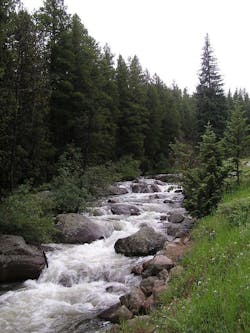Report Reveals Water Quality Monitoring Low in U.S.
A report released by the Izaak Walton League of America (IWLA) shows state water quality monitoring in streams across the country is haphazard and limited, leaving Americans in the dark about the health of local waters—and potentially leaving pollution undetected.
The Izaak Walton League conducted an extensive investigation into stream monitoring practices and water pollution problems in all 50 states and uncovered the following results:
- Analysis shows states are effectively monitoring water quality in only 2% of rivers and streams nationwide.
- Based on state reports to the U.S. Environmental Protection Agency (EPA), more than half (55%) of the streams and rivers states tested were not safe for designated uses such as swimming and fishing or as sources of drinking water.
- Pollutants in these waters include a lengthy list of bacteria, carcinogens, and nutrients.
- Testing sites are often randomly located and limited in number, and most information about water quality in streams is five to 10 years old.
- More than half of all states (26) received D or F grades for the overall effectiveness of the state’s stream monitoring efforts.
“There is an alarming lack of timely information about water quality in this country,” said IWLA Executive Board Chair Jodi Arndt Labs. “Every morning, you can read about that day’s air quality in the local paper or on your smart phone. Yet information about the health of local streams is 5 to 10 years old. That’s a problem!”
The Clean Water Act of 1972 requires states monitor the safety of all waterways, report water quality information publicly every two years and address pollution problems. However, states vary widely in virtually every aspect of water quality monitoring, including standards used to assess water quality; where, when, and which waters are tested; the types of tests performed; and how states provide information to the public. The Izaak Walton League found many states have weak water quality standards that can inflate the number of waters rated clean and healthy. And most states don’t monitor water quality often enough to make accurate statewide safety claims.
To solve the problem, the Izaak Walton League proposes empowering citizens to collect scientifically valid water quality data (and ensuring states use this data more effectively).
The League has been training and supporting citizen volunteers for decades through its Save Our Streams (SOS) program. Variations of the League’s SOS program have been adopted by states and volunteer groups across the country.
However, rather than embrace volunteer help, many states hold citizen volunteers at arm’s length. Some states don’t use the water quality data citizens provide. Other states require volunteers complete unnecessarily complex certifications or send water samples to labs for expensive tests before the state will consider using their data. This erects barriers to citizen engagement and reduces the amount of timely water quality information available to the public. Twenty-nine states received D or F grades for volunteer engagement because they do not effectively partner with volunteer monitors or use the data volunteers collect.
“The solution to ensuring the public has accurate, timely, and local information about stream health isn’t a mystery,” said Scott Kovarovics, IWLA Executive Director. “Across the country today, league chapters and networks of citizen monitors are already doing great work. Volunteers could regularly monitor water quality in thousands more streams and provide timely results to their neighbors and state governments. The league is committed to achieving this goal by getting more citizens involved in stream monitoring nationwide.”
Source: Izaak Walton League of America


